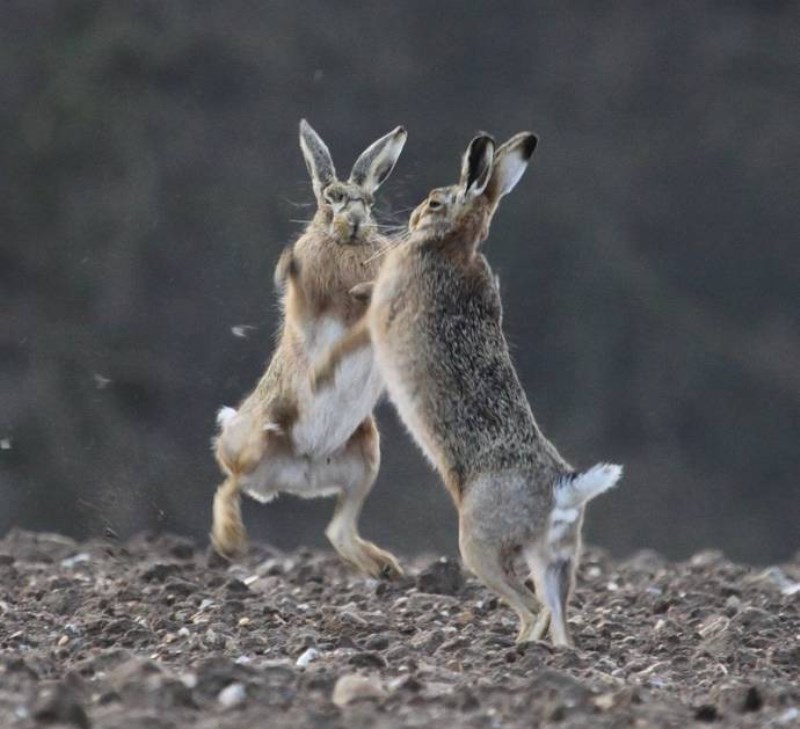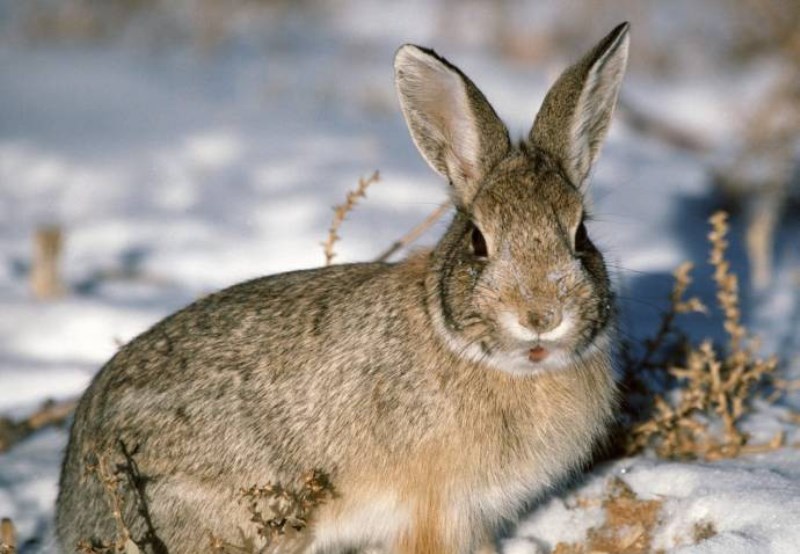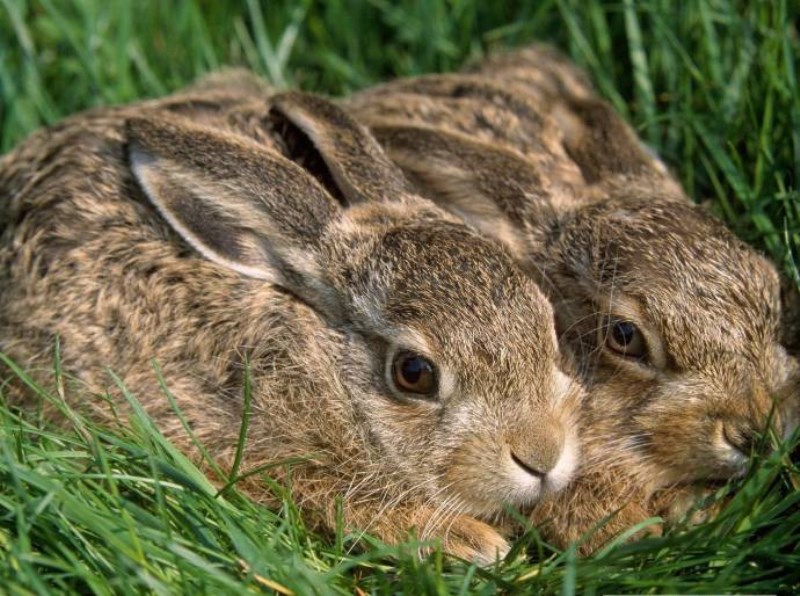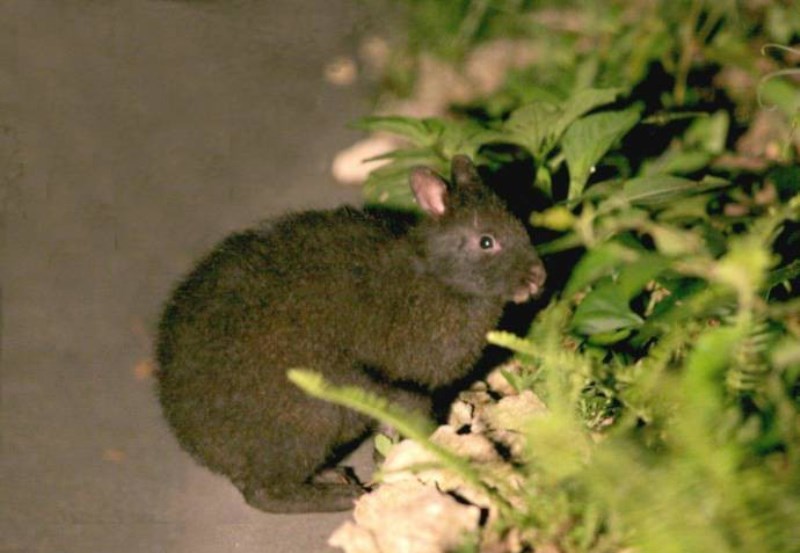Interesting facts about hares. Facts about hares
"target =" _ blank "\u003e
Ten interesting facts about these lovely beings ...
http: //farm2.static.flickr.com/1005/1458862612_289d6b5c60_b .... "target =" _ blank "\u003e 
1) Hares live around the globe. Everywhere they are the object of the hunt, but the saying “There are 10 hunters for one hare” is not at all an exaggeration. Hares are not extinct just because they are very prolific.
2) Hares are not at all cowardly and good-natured. They are rather angry and restless. Protecting, the hare can break the belly and chest of the predator with its claws. There are cases when predators after such self-defense died.
3) A case was documented when a hare, brought up by a domestic dog, took a number of habits from it, he even threw himself at other dogs and bit them.
http://farm1.static.flickr.com/95/275710273_6fa37d580e_o.jpg "target =" _ blank "\u003e 
4) Hares are not vegetarians at all. They eat not only cabbage, but also meat! In the North, partridge hunters know well that if the prey is not taken out of the snare, then the hare will quickly eat it.
5) “Drum roll” that hares and rabbits knock out with their paws is their means of communication. Similarly, elephants stomp on the ground with their feet.
6) Although the hare is often called oblique, he has no strabismus. The squints were attributed to hares by hunters, who noticed that the hare dodged all the time and returned to its mark. In fact, the reason for this behavior is the asymmetry in the development of the right and left paws of hares.
http: //farm4.static.flickr.com/3314/3671688560_6f8bcf177f_z .... "target =" _ blank "\u003e 
7) Hare - like a lion, a territorial animal. He "has no right" to violate someone else's territory, so that he runs away only within the limits of his "living space."
8) The work of grandfather Mazaya is not so pleasant. Hares are afraid of boats, so they have to be caught first with a net, and only then taken to a safe place.
9) The island on which the Peter and Paul Fortress in St. Petersburg stands is called Hare. According to legend, one hare escaped from the flood by jumping into the boot of Peter I. In 2003, at the Peter and Paul Fortress, the sculpture “The bunny escaping from the flood” was installed.
10) Lenin, about the kindness of which every Soviet Oktyabrenok knew, somehow in Shushensky during the spill of the Yenisei, came across an island with hares and killed all the hares.
Today we want to tell you about the most common bunnies. In front of you interesting facts about hares:
1. Wild animal hare- a very common being. They live across the planet, adapting to different climates. Eared only Antarctica
2. Hares live on the earth for more than 35 thousand years in a row; now 45 species of hares are known to science, which zoologists subdivide into three groups: real hares, rabbits and red-haired tree hares - all of 15 species each.
3. Why do hares have long ears? Because they help them escape from the heat, during overheating of the body, the ears actively remove heat. It is at the same time a weak hare's place; in no case should water get into it, otherwise the animal will catch a cold, therefore during a rain the bunny bends its ears to the back.
4. Hares are very hardy, they can ride for quite a long time at a speed of 50 kilometers / hour, making unimaginable turns at the same time. You can compare their feet with springs.
5. In hares, teeth grow throughout life. Nature has provided such a regeneration, because the teeth of the hare are constantly being worn out about the solid food that the beast gnaws.
6. A hare is a territorial animal, even running away from predators, it moves strictly within its site.
7. Hares - not vegetarians! They eat vegetables, tree bark, but they do not refuse meat.
8. To communicate with each other, hares use “drumming”, stuffing it with their paws. The same - the sound principle of communication is used by elephants, when they stomp their powerful legs on the ground, thereby warning their relatives that the territory is occupied.
9. Why the hare is called oblique? In fact, they do not have strabismus, and hunters gave this nickname to the animals for constantly dodging, confusing the trackers and bouncing backwards away from the packed trail. In addition, they have oblique - asymmetrically developed legs - left and right.
10. In the winter time, the fur on the hare's abdomen becomes thicker and longer, so that the animal does not freeze. For the same reason, hairs grow around the nose, protecting it from the frosty air.
11. A case of raising a hare by a dog is known. As a result, the animal adopted a dogish demeanor - he bit and fell on other dogs, but did not learn to bark.
12. For a long time, scientists attributed the lagomorphs to the order of rodents, not so long ago highlighting them in a separate category.
13. Hares live about 9 years, males less - only 5 years. Known and long-haired hare, who was 13 years old, but up to this age only fall short in captivity. In nature, hares live little - because they are prey for many predators and hunters. In addition, in itself, hare life is fraught with many difficulties.
Everyone thinks that hares, or even, as their children call them, hares are cute fluffy creatures that jump over themselves carelessly on the meadows, eat grass, are afraid of everyone to faint, and therefore everyone tries to offend them.
It’s just we in childhood cartoons saw enough like “Well, wait!” And others. In fact, far from it. First of all, hares are quite aggressive, angry and restless creatures that can easily stand up for themselves. For example, no self-respecting hunter will take a living hare by the ears, although they seem to be even designed for this.
And why? Because the hare is easily dodging in inexperienced hands and so cuts in to the unfortunate hunter with his powerful hind legs that he rips his stomach open all the way to the intestines, which, of course, ends very sadly for “the top manager in the food chain. Hares use a similar technique in a brutal fight against predators and, you won’t believe, they often win.
Hares eat weed. Yes, the long-eared have such a weakness. But with the same success, hares, on occasion, are ready to eat raw meat, so calling them herbivores is not entirely correct, rather, half-predatory animals. Northern hunters are well aware, and therefore try to check their snares on the partridges before the bloodthirsty hares get to them. Because if the long-eared one does not get ahead - the partridge will be eaten. Moreover, the hare will get into the habit and continue to check the snare before the hunter with the same result, so that the latter will urgently need to change the dislocation.

By the way, scientists who for a long time officially designated all hares as rodents, having learned in more detail about their bad habits, isolated the former rodents into a separate unit of lagomorphs, rightly deciding that they are still not enough to real predators.
With proper rearing, a hare can easily replace a guard dog. You do not laugh, but there is documentary evidence that one hare, brought up in a dog "team", actually served, rushed at strangers and other dogs and bit them for different sensitive places.

King of beasts in miniature
The hare, by the way, has something in common with the lion. Like the king of beasts, our hero strictly keeps his territory, does not allow strangers to it, but does not even climb into other people's food.
A slanting hare is not called at all because of his vision problems. His eyes are fine, you can envy. This beast received the nickname "scythe" for running away, making a circle and always returning to almost the same place from which it started. But this is not a trick and not stupidity. It’s just that the hare's right front and hind legs are more developed than the left ones (it happens and vice versa, there are left-handed hares).
By the way, the person has the same feature. If you, for example, walk or run through the forest "by eye" without using a compass and a GPS device, and you move, as it seems to you, all the time straight and without turning anywhere, then, after a while, you will also go to the place where you started your way.
Hunters know this peculiarity of hares and shamelessly use it. Running the dogs on the trail of a slant, the hunter simply waits in the same place where he scared off the prey. Sooner or later the hare returns to it.

Workers
There are many hunters for hares, but no more than the animals themselves, and therefore destruction does not threaten them. The long-eared long and thoroughly populated (with the exception of some territories) all of our planet, and now 45 species of hares and 15 species of rabbits live and breed safely on Earth.
And the rabbits are so tenacious and prolific that they have captured a whole continent - Australia. Some not very far-sighted immigrant brought a dozen rabbits with him for a divorce, in order to later hunt them, and clearly overdid it. Now in Australia there are clearly more rabbits than all residents combined, if not more than all other animals.
For the release of a rabbit of any sex, there will be a large fine here, and do not even think about going to Australia with a live rabbit. You will be turned back at the customs, they will close the visa for life, and they even complain to the government of your country that, they say, you are not good, because you clearly deliberately tried to break the basic law of the Green Continent - no rabbits!
![]()
So what's the difference?
Here it is appropriate to tell what the hares are different from each other and what is the difference between a hare and a rabbit.
First of all, hares differ in ears. For example, Siberian hunters distinguish a hare from a white hare in a rather simple way: they bend the ears of a caught hare forward, to the nose. If the ears do not reach to the face, then it is a hare. If the ears of the animal freely reach the tip of the nose, or even slightly longer, then the hare is in front of us.
The easiest way to distinguish a rabbit from a rabbit is at birth. Rabbits are born blind and bare, the first days of their life they are absolutely helpless and sit in their native nest. Hares, on the contrary, come into the world with their eyes wide open and already within a few minutes after birth are ready to “tear their claws”.
Another difference is that rabbits are more or less sedentary, gather in groups and are found in earthen holes, which they dig for themselves. Hares, on the other hand, are tumbleweed, family life is not favored, and under each bush both the table and the house are ready for them.
Different types of hares and rabbits are different ways of movement and speed. Rabbit - runner relatively useless. Its maximum speed is slightly more than 50 kilometers per hour. And even then, even after a relatively short distance, he quickly exhales, and therefore prefers not to run away from the pursuer, but to hide in a hole or at worst under a bush. Hares are real sprinters, they are able to accelerate to a speed of 80 kilometers per hour, and the height of their jump reaches 3.5 meters. In addition, hares swim well and know how to move well in rocky areas.

Great rarity
We said that hares in nature are very small, but there are exceptions among them - quite rare species.
For example, the so-called arboreal, or climbing hare dwells only on two small Japanese islands: Anami-Oshima and Toku-no-Oshima. From the name of the breed it is clear that this amazing hare does not rush through the fields like its relatives, but jumps over trees. In the last century, researchers estimated that about 500 individuals remained in the wild nature of these unique hares. What is their number today is unknown.
In America, because of the violation of the ecological balance, water hares are gradually dying out. Representatives of this breed, unlike their fellows, prefer to settle along the banks of rivers and swampy water bodies. Fleeing from pursuit, the water hare clings to the nearest reservoir and quickly rows to the other bank. If necessary, the hare is able to dive into the water and, having stuck out only one nose, sit there for a long time.

Water bunny
Now water hares are extremely rare, and therefore are listed in the Red Book. But the rarest beast is the Sumatran, or striped hare. It has a characteristic color - several brown stripes are drawn over the gray top. One broad band goes along the ridge from muzzle to tail. The other is from the shoulders to the hips, and the third goes from the hips to the hind legs. The striped hare lives (or lived) in the southwest of the island of Sumatra. According to unconfirmed reports, the Sumatran hares now number only two dozen in nature.
Ten interesting facts about these lovely beings ...

1) Hares live around the globe. Everywhere they are the object of the hunt, but the saying “There are 10 hunters for one hare” is not at all an exaggeration. Hares are not extinct just because they are very prolific.
2) Hares are not at all cowardly and good-natured. They are rather angry and restless. Protecting, the hare can break the belly and chest of the predator with its claws. There are cases when predators after such self-defense died.
3) A case was documented when a hare, brought up by a domestic dog, took a number of habits from it, he even threw himself at other dogs and bit them.

4) Hares are not vegetarians at all. They eat not only cabbage, but also meat! In the North, partridge hunters know well that if the prey is not taken out of the snare, then the hare will quickly eat it.
5) “Drum roll” that hares and rabbits knock out with their paws is their means of communication. Similarly, stomping on the ground with their feet.
6) Although the hare is often called oblique, he has no strabismus. The squints were attributed to hares by hunters, who noticed that the hare dodged all the time and returned to its mark. In fact, the reason for this behavior is the asymmetry in the development of the right and left paws of hares.

7) Hare - like a territorial animal. He "does not have the right" to violate foreign territory, so that he runs away only within the limits of his "living space."
8) The work of grandfather Mazaya is not so pleasant. Hares are afraid of boats, so they have to be caught first with a net, and only then taken to a safe place.
9) The island on which the Peter and Paul Fortress in St. Petersburg stands is called Hare. According to legend, one hare escaped from the flood by jumping into the boot of Peter I. In 2003, at the Peter and Paul Fortress, the sculpture “The bunny escaping from the flood” was installed.
10) Lenin, about the kindness of which every Soviet Oktyabrenok knew, somehow in Shushensky during the spill of the Yenisei, came across an island with hares and killed all the hares.
via Hot ten Anna Romanova.
New Articles
- What is the highest peak of the Ural Mountains
- The most ancient religions in the world
- What continents are washed by the Atlantic Ocean?
- Can I wear jewelry of the deceased?
- Snake, Bowl and Staff: The Origin of Medical Symbols
- Interesting facts about hares
- Names of famous brands in other countries
- Karelo Finnish epic kalevala protagonists
- 17 18 weeks pregnant sensations
- Why do people become so aggressive
Popular articles
- Expression twice in one river, meaning and meaning
- Gusli - musical instruments
- Report: Temperature Scales and Thermometers
- Which side to sew on chevron
- How to draw emblems for school
- Unusual rivers of the world and the rivers of Russia - Rivers with sour water
- Numb of the little finger on the right hand: causes and methods of treatment
- Why development is important for a person
- Constellations from ancient atlases
- What happens at 31 weeks
